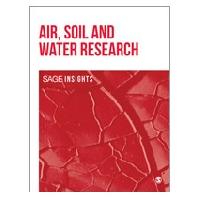Abstracto
-
AUTHORS
Lourdes SugastiABSTRACT
Soil CO2 fluxes from tropical forests into the atmosphere are expected to increase due to global warming. Studies of environmental conditions that contribute to carbon flux are now an important focus for climate change research. However, carbon flux in tropical areas such as Panama has received less attention. In Panama, water sources, rainforests, and soil conditions are vital natural resources, particularly within the Panama Canal watershed. Mature and secondary forests represent around 60% of Panama land cover. Secondary forests are considered potential carbon sinks and they are of economic interest as a means of mitigating increasing anthropogenic CO2 emissions; however, the dynamics of carbon fluxes in the soil of secondary forests remain poorly understood. This research investigated which environmental factors influence soil CO2 efflux. We used a closed chamber method to measure soil CO2 in the tropical forest of Barro Colorado Island, Panama. During 2016 to 2017, humidity had a significant effect on CO2 flux (average: 4.36 μmol/m2s), which was substantially lower than expected for this type of tropical forest. These findings will contribute to a better understanding of the complex and dynamic interrelationships between the water and carbon cycle, as well as abiotic drivers of soil CO2 fluxes. Our use of soil respiration chambers and infrared gas analyzer systems represents an innovative contribution to the water-carbon nexus of Panama and potentially of other countries.
